
|
 |
- Home
- News
- Team
- Databases
- Conferences
- Oxford Studies on the Roman Economy
- Coin Hoards of the Roman Empire Project
- Affiliated Projects
- Publications
- Bibliographies
- Working Papers
- Links
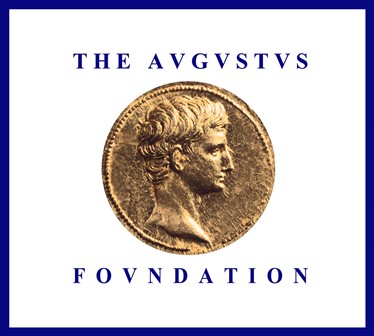
Oxford Studies on the Roman Economy
Series Editors: A.K. Bowman, A.I. Wilson In connection with the Oxford Roman Economy Project, Oxford University Press has agreed to inaugurate a series of publications under the general title Oxford Studies on the Roman Economy (OSRE). The OSRE series consists of edited volumes as well as monographs. The edited volumes published to date consist of papers presented at OXREP conferences from 2006 onward. Several other volumes of this sort are currently in preparation. Other monographs on a wide range of topics related to the Roman economy have been published or accepted for publication in this series by OUP. The OUP and the editors intend that the series should have a life above and beyond the limits of the project and are keen to encourage the submission of book-length manuscripts on appropriate subjects in the general area of the Roman economy. These need not be confined to the constraints of subject-matter or chronology defined for the Oxford project itself. More information about how to submit a book proposal can be found in the Guidelines for authors section Current titles in the OSRE Series
Several other titles are currently under consideration.
|
Quantifying the Roman Economy |
|
Quantifying the Roman Economy. Methods and Problems This collection of essays is the first volume in a new series, Oxford Studies on the Roman Economy. Edited by the series editors, it focuses on the economic performance of the Roman empire, analysing the extent to which Roman political domination of the Mediterranean and north-west Europe created the conditions for the integration of agriculture, production, trade, and commerce across the regions of the empire. Using the evidence of both documents and archaeology, the contributors suggest how we can derive a quantified account of economic growth and contraction in the period of the empire's greatest extent and prosperity. |  |
Settlement, Urbanization, and Population |
|
Settlement, Urbanization, and Population
This volume presents a collection of studies focussing on population and settlement patterns in the Roman empire in the perspective of the economic development of the Mediterranean world between 100 BC and AD 350. The analyses offered here highlight the issues of regional and temporal variation in Italy, Spain, Britain, Egypt, Crete, and Asia Minor from classical Greece to the early Byzantine period. The chapters fall into two main groups, the first dealing with the evidence for rural settlement, as revealed by archaeological field surveys, and the attendant methodological problems of extrapolating from that evidence a view of population; and the second with city populations and the phenomenon of urbanization. They proceed to consider hierarchies of settlement in the characteristic classical pattern of city plus territory, and the way in which those entities are defined from the highest to the lowest level: the empire as 'city of Rome plus territory', then regional and local hierarchies, and, more precisely, the identity and the nature of the 'instruments' which enables them to function in economic cohesion. | 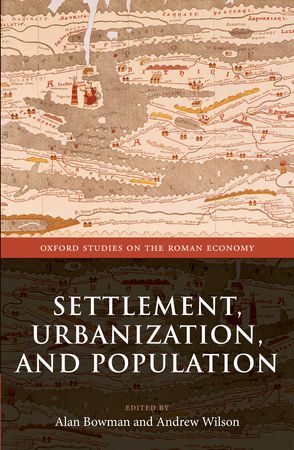 |
The Roman Agricultural Economy |
|
The Roman Agricultural Economy: Organisation, Investment and Production
This volume is a collection of studies which presents new analyses of the nature and scale of Roman agriculture in the Mediterranean world from c. 100 BC to AD 350. It provides a clear understanding of the fundamental features of Roman agricultural production through studying the documentary and archaeological evidence for the modes of land exploitation and the organization, development of, and investment in this sector of the Roman economy. | 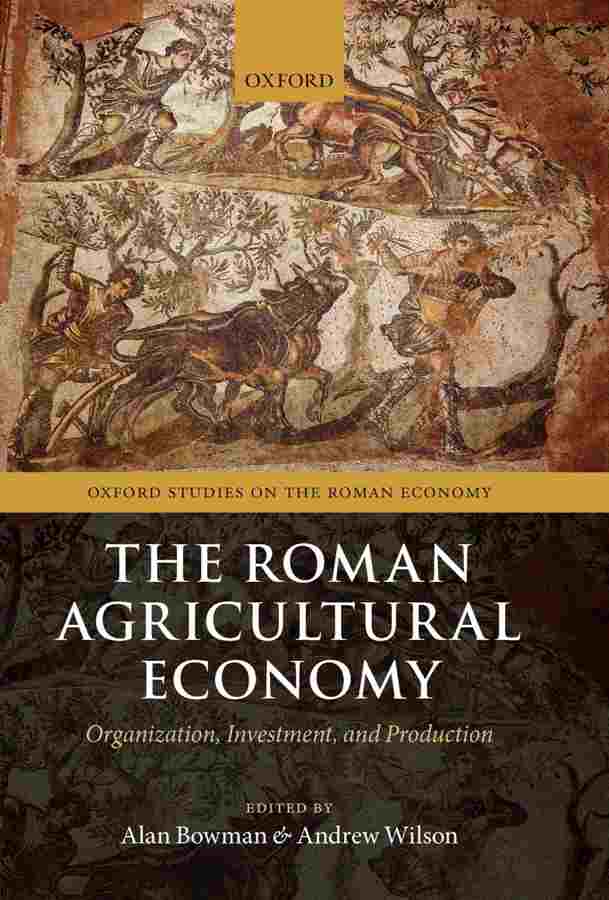 |
The World of the Fullo |
|
The World of the Fullo. Work, Economy and Society in Roman Italy The World of the Fullo takes a detailed look at the fullers, craftsmen who dealt with high-quality garments, of Roman Italy. Analyzing the social and economic worlds in which the fullers lived and worked, it tells the story of their economic circumstances, the way they organized their workshops, the places where they worked in the city, and their everyday lives on the shop floor and beyond.
Through focusing on the lower segments of society, Flohr uses everyday work as the major organizing principle of the narrative: the volume discusses the decisions taken by those responsible for the organization of work, and how these decisions subsequently had an impact on the social lives of people carrying out the work. It emphasizes how socio-economic differences between cities resulted in fundamentally different working lives for many of their people, and that not only were economic activities shaped by Roman society, they in turn played a key role in shaping it. | 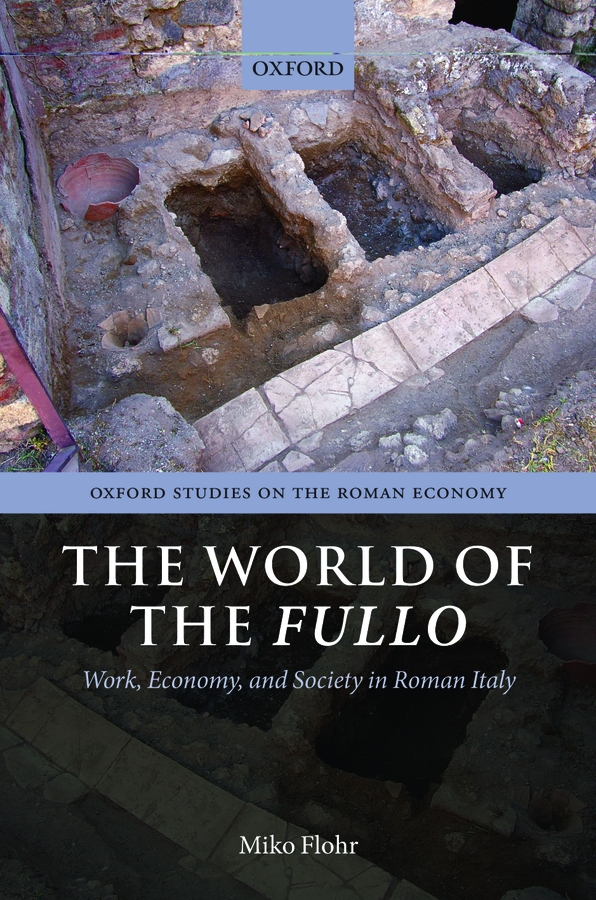 |
Harvesting the Sea |
|
Harvesting the Sea. The Exploitation of Marine Resources in the Roman Mediterranean Harvesting the Sea provides the first systematic treatment of the exploitation of various marine resources, such as large-scale fishing, fish salting, salt and purple-dye production, and oyster and fish-farming, in the Roman world and its role within the ancient economy. Bringing together literary, epigraphic, and legal sources, with a wealth of archaeological data collected in recent years, Marzano shows that these marine resources were an important feature of the Roman economy and, in scope and market-oriented production, paralleled phenomena taking place in the Roman agricultural economy on land. The book also examines the importance of technological innovations, the organization of labour, and the use of the existing legal framework in defence of economic interests against competitors for the same natural resource. | 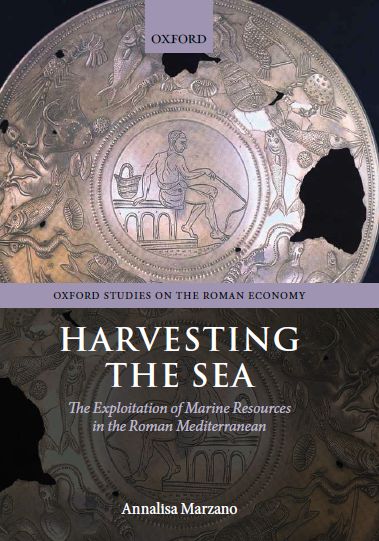 |
The Economics of the Roman Stone Trade |
|
The Economics of the Roman Stone Trade
The use of stone in vast quantities is a ubiquitous and defining feature of the material culture of the Roman world. In this volume, Russell provides a new and wide-ranging examination of the production, distribution, and use of carved stone objects throughout the Roman world, including how enormous quantities of high-quality white and polychrome marbles were moved all around the Mediterranean to meet the demand for exotic material. | 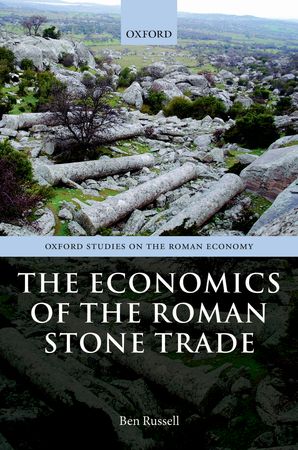 |
The Economic Revolution of Rome |
|
Rome's Economic Revolution
In this volume, Philip Kay examines economic change in Rome and Italy between the Second Punic War and the middle of the first century BC. He argues that increased inflows of bullion, in particular silver, combined with an expansion of the availability of credit to produce significant growth in monetary liquidity. This, in turn, stimulated market developments, such as investment farming, trade, construction, and manufacturing, and radically changed the composition and scale of the Roman economy. | 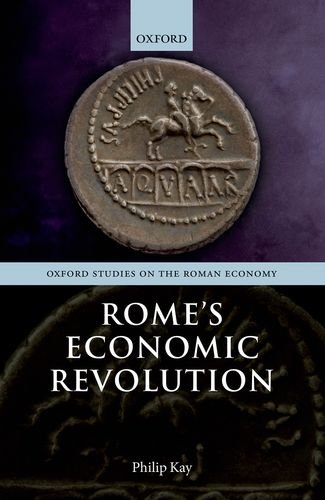 |
Triangular Landscapes. Environment, Society, and the State in the Nile Delta under Roman Rule |
|
Triangular Landscapes. Environment, Society, and the State in the Nile Delta under Roman Rule Between the Roman annexation of Egypt and the Arab period, the Nile Delta went from consisting of seven branches to two, namely the current Rosetta and Damietta branches. For historians, this may look like a slow process, but on a geomorphological scale, it is a rather fast one. How did it happen? How did human action contribute to the phenomenon? Why did it start around the Roman period? And how did it impact on ancient Deltaic communities? This volume reflects on these questions by focusing on a district of the north-eastern Delta called the Mendesian Nome. | 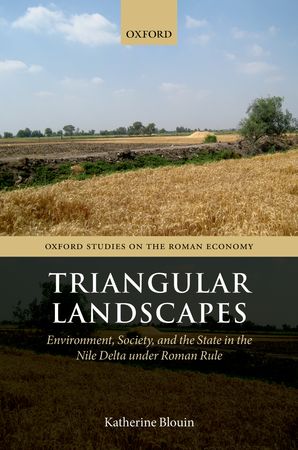 |
Ownership and Exploitation of Land and Natural Resources in the Roman World |
|
Ownership and Exploitation of Land and Natural Resources in the Roman World
Explanation of the success and failure of the Roman economy is one of the most important problems in economic history. As an economic system capable of sustaining high production and consumption levels, it was unparalleled until the early modern period. | 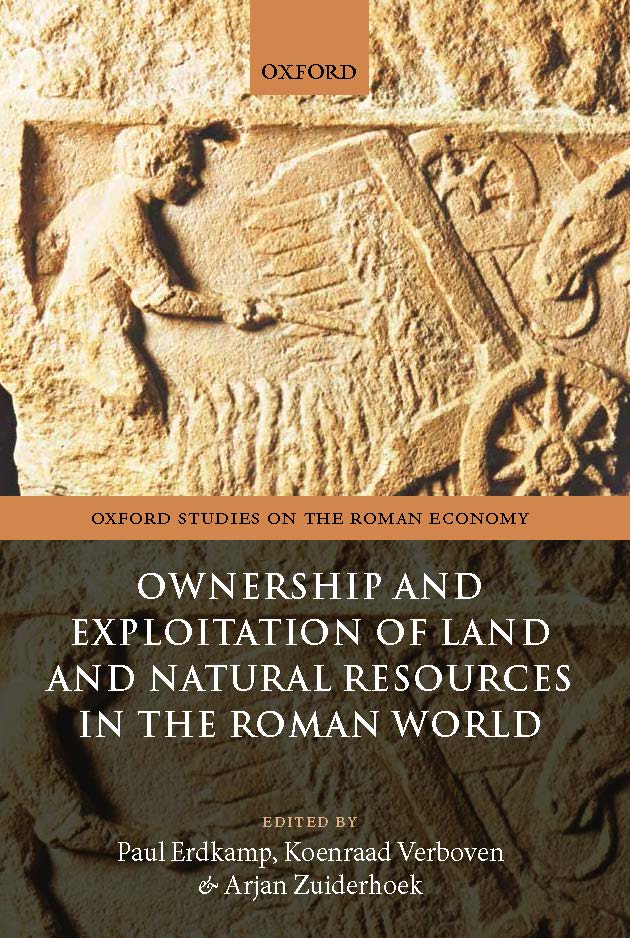 |
Urban Craftsmen and Traders in the Roman World |
|
Urban craftsmen and traders in the Roman world This volume, featuring sixteen contributions from leading Roman historians and archaeologists, sheds new light on approaches to the economic history of urban craftsmen and traders in the Roman world, with a particular emphasis on the imperial period. Combining a wide range of research traditions from all over Europe and utilizing evidence from Italy, the western provinces, and the Greek-speaking east, this edited collection is divided into four sections. It first considers the scholarly history of Roman crafts and trade in the nineteenth and twentieth centuries, focusing on Germany and the Anglo-Saxon world, and on Italy and France. Chapters discuss how scholarly thinking about Roman craftsmen and traders was influenced by historical and intellectual developments in the modern world, and how different (national) research traditions followed different trajectories throughout the nineteenth and twentieth centuries. The second section highlights the economic strategies of craftsmen and traders, examining strategies of long-distance traders and the phenomenon of specialization, and presenting case studies of leather-working and bread-baking. In the third section, the human factor in urban crafts and trade—including the role of apprenticeship, gender, freedmen, and professional associations—is analysed, and the volume ends by exploring the position of crafts in urban space, considering the evidence for artisanal clustering in the archaeological and papyrological record, and providing case studies of the development of commercial landscapes at Aquincum on the Danube and at Sagalassos in Pisidia. | 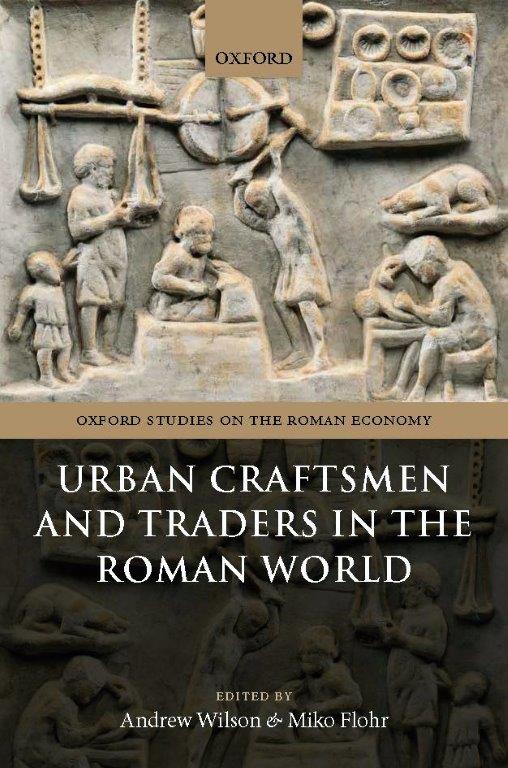 |
The Economy of Pompeii |
|
The Economy of Pompeii This volume presents fourteen papers by Roman archaeologists and historians discussing approaches to the economic history of Pompeii, and the role of the Pompeian evidence in debates about the Roman economy. Four themes are discussed. The first of these is the position of Pompeii and its agricultural environment, discussing the productivity and specialization of agriculture in the Vesuvian region, and the degree to which we can explain Pompeii's size and wealth on the basis of the city's economic hinterland. A second issue discussed is what Pompeians got out of their economy: how well-off were people in Pompeii? This involves discussing the consumption of everyday consumer goods, analyzing archaeobotanical remains to highlight the quality of Pompeian diets, and discussing what bone remains reveal about the health of the inhabitants of Pompeii. A third theme is economic life in the city: how are we to understand the evidence for crafts and manufacturing? How are we to assess Pompeii's commercial topography? Who were the people who actually invested in constructing shops and workshops? In which economic contexts were Pompeian paintings produced? Finally, the volume discusses money and business: how integrated was Pompeii into the wider world of commerce and exchange, and what can the many coins found at Pompeii tell us about this? What do the wax tablets found near Pompeii tell us about trade in the Bay of Naples in the first century AD? Together, the chapters of this volume highlight how Pompeii became a very rich community, and how it profited from its position in the centre of the Roman world. | 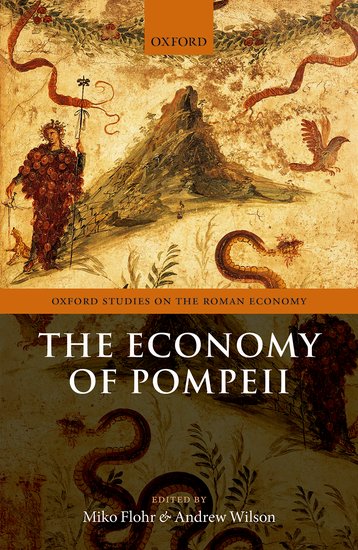 |
The Romans and Trade |
|
The Romans and Trade André Tchernia is one of the leading experts on amphorae as a source of economic history, a pioneer of maritime archaeology, and author of a wealth of articles on Roman trade, notably the wine trade. This book brings together the author's previously published essays, updated and revised, with recent notes and prefaced with an entirely new synthesis of his views on Roman commerce with a particular emphasis on the people involved in it. The book is divided into two main parts. The first is a general study of the structure of Roman trade: Landowners and traders, traders' fortunes, the matter of the market, the role of the state, and dispatching what is required. It tackles the recent debates on Roman trade and Roman economy, providing, original and convincing answers. The second part of the book is a selection of 14 of the author's published papers. They range from discussions of general topics such as the ideas of crisis and competition, the approvisioning of Ancient Rome, trade with the East, to more specialized studies, such as the interpretation of the 33 AD crisis. Overall, the book contains a wealth of insights into the workings of ancient trade and expertly combines discussion of the material evidence-especially of amphorae and wrecks-with the prosopographical approach derived from epigraphic, papyrological and historical data. For more information visit the Oxford University Press website.
| 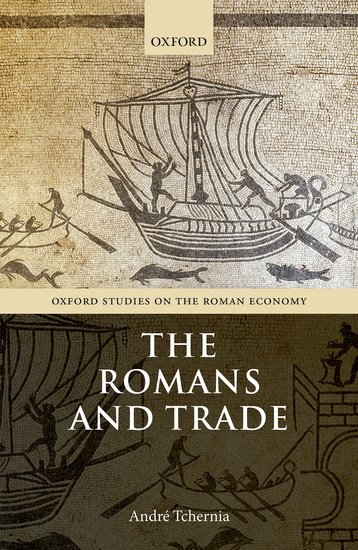 |
Trade, Commerce, and the State in the Roman World |
|
Trade, Commerce, and the State in the Roman World This volume presents eighteen papers by leading Roman historians and archaeologists discussing trade in the Roman Empire during the period c.100 BC to AD 350. It focuses especially on the role of the Roman state in shaping the institutional framework for trade within and outside the empire, in taxing that trade, and in intervening in the markets to ensure the supply of particular commodities, especially for the city of Rome and for the army. | 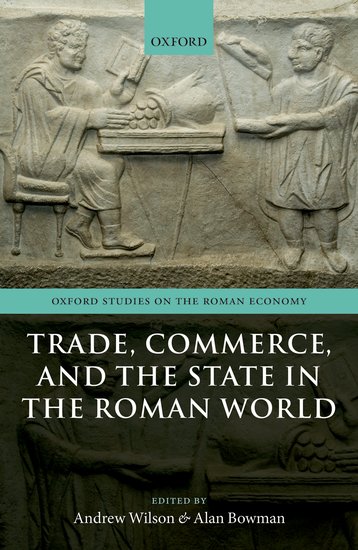 |
Mining, Metal Supply and Coinage in the Roman Empire |
|
Mining, Metal Supply and Coinage in the Roman Empire This volume will publish the papers of the OXREP conference on Metals, Mining and Coinage in the Roman World held on October 1-2, 2010. Contributions are currently being edited. |
Webdesign, databasedesign: Miko Flohr, 2010-2024. Content: OXREP, 2005-2024.